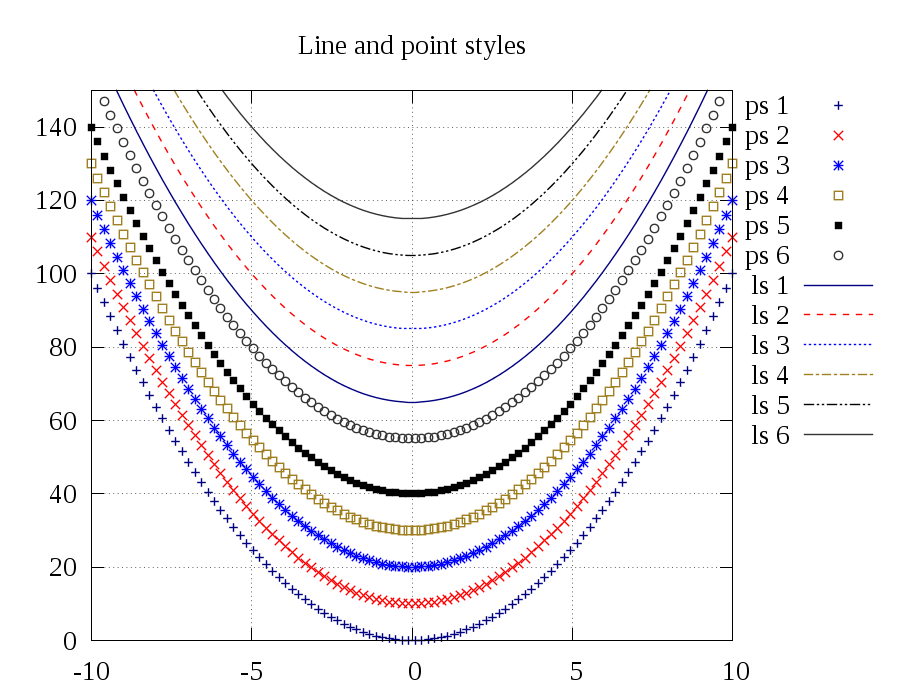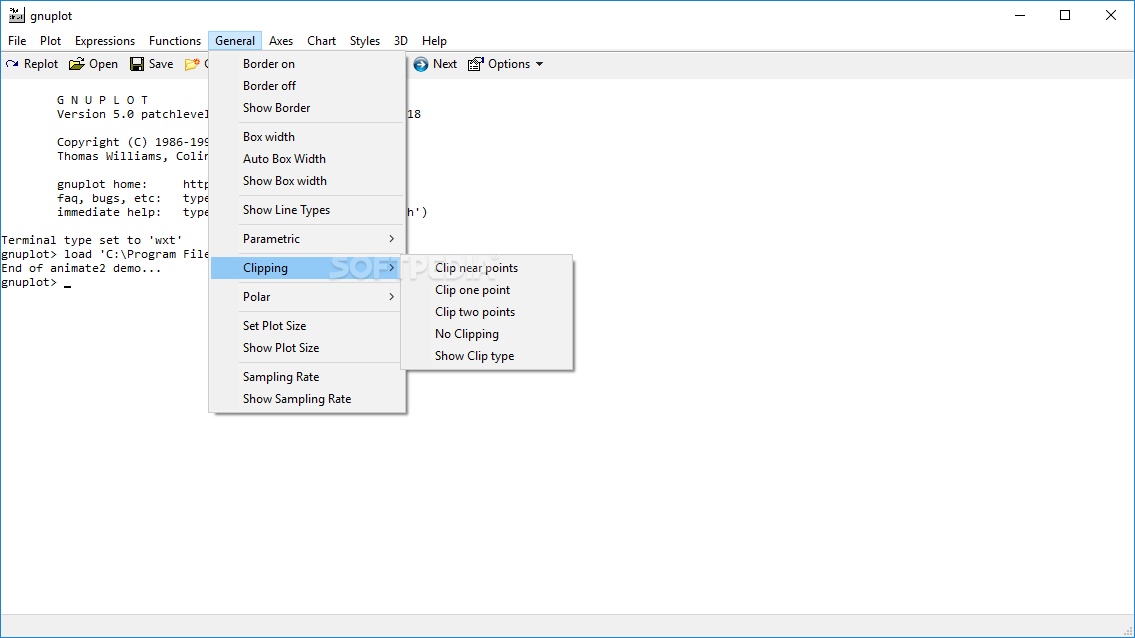

#GNUPLOT COMMANDS MAC OS#

Plotting the data from a two-column file is easy: It prompts you with gnuplot> as shown, but I won’t show that prompt in the examples below. The latest version of Gnuplot works with both formats without requiring you to specify a column-separator. Note that the columns in the first file are separated by whitespace, and the columns in the second file are separated by commas (a CSV file). The examples below use the following 2-column and 4-column data files: You can find more information about the need for this new brew command at this SO link. Please select a terminal with 'set terminal'. WARNING: Plotting with an 'unknown' terminal. You’ll know that you need that command if you get this error message when you try to run a plot command inside the gnuplot command line: Note that with OS X Yosemite (10.10.x) I had to use this brew command instead:
#GNUPLOT COMMANDS MAC OS X#
To get started, you can use MacPorts or Homebrew to install Gnuplot on Mac OS X systems: If you haven’t used it before, it’s an amazing tool for creating graphs and charts.
#GNUPLOT COMMANDS HOW TO#
1.I needed to use Gnuplot a little bit over the last few days, mostly to create 2D line charts, and these are my brief notes on how to get started with Gnuplot. # To make a table that has column1 = 0.05, 0.1. # below to do arithmetic on the columns with awk or the 'plot using' command # of each vector are represented by a column.

# vectors together, I usually just make a table where the values # Instead of loading variables into a vector and multiplying # VECTORS, PLOTTING DATA FROM A FILE, PLOTTING SINGLE POINTS # The linestyle command is a shortcut to changing the points and line types each time

# STORING AND USING A LINE TYPE AND POINT TYPE Set arrow from 1,2 to 4,8.4 nohead lt -1 lw 1.2 # use the arrow command with nohead to draw just a line: # DRAW A LINE OR ARROW BETWEEN TWO POINTS # lw chooses a line width 1=normal, can use 0.8, 0.3, 1.5, 3, etc. # for postscipt -1=normal, 1=grey, 2=dashed, 3=hashed, 4=dot, 5=dot-dash # lt must be specified before pt for colored points # lt chooses a particular line type: -1=black 1=red 2=grn 3=blue 4=purple 5=aqua 6=brn 7=orange 8=light-brn # type 'test' to see the colors and point types available. # 7=filled circle, 8=triangle, 9=filled triangle, etc. # pt gives a particular point type: 1=diamond 2=+ 3=square 4=X 5=triangle 6=* # lt is for color of the points: -1=black 1=red 2=grn 3=blue 4=purple 5=aqua 6=brn 7=orange 8=light-brn # type 'test' to see the colors and point types available # for errorbar options type 'help plot errorbars' # choice of points, lines, linespoints, steps, boxes, errorbars, impulses, etc. # the noautoscale, xrange, yrange change the x- and y-limits # eps file each time I load, and then a third window running ghostview to view the eps file. # window running gnuplot where I simply keep loading in the new command file and it makes a new I edit the command file in one window, have a second Along the learning curve, I made some notes for myself. I use now on my linux machines to make publication quality scientific Gnuplot is a free program that plots 2D and 3D data.


 0 kommentar(er)
0 kommentar(er)
